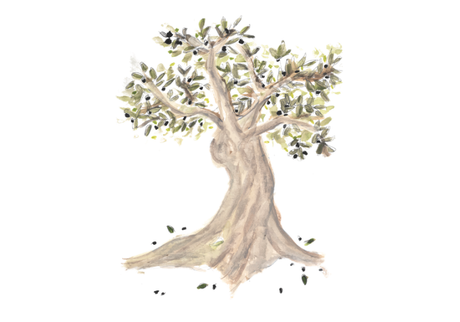Common misconceptions about olive oil (2/3): does the olive variety affect the quality of its oil?

February 16, 2021
I am sometimes asked about the variety of olives I use to produce my 18:1 oils. But even more frequently, I am asked about the country, or even the region, where I cultivate them. Can human-made borders influence the flavor or nutritional quality of the fruit?
Attributing the quality of olive oil to a specific region is a misconception ingrained in our minds. So, let's debunk these myths and give consumers all the information they need to choose and appreciate this product for its true value!
It’s the variety of the olive that matters, not its country of origin
Indeed, the Mediterranean region accounts for 90% of global olive production, with Spain being by far the largest producer. Of course, certain climatic conditions are required for an olive tree to thrive. However, the soil itself does not affect the intrinsic qualities of the olive. Therefore, it’s primarily the variety of the olive that determines its flavor and aromas.
Every olive variety has ots own DNA
In fact, each variety of olive offers a distinct organoleptic and sensory profile. So, to truly appreciate olive oil, you must first appreciate the variety of olive used. Did you know there are nearly 1,200 olive varieties worldwide, with 400 used to make oil? And each has its own unique taste profile!
Blended olive oils have a neutral taste
Most industrial oils blend different olive varieties. As a result, these oils tend to have almost the same taste. The palate gets used to these neutral flavors and misses out on the richness that nature offers. That’s why all the oils from Alexis Muñoz are monovarietal (made from a single variety): to respect the fruit’s true character.
The maturity of the olive also affects its flavor
A ripe olive and an unripe (green) one will reveal different flavors.
For example, the Picual variety will have pronounced tomato-leaf aromas when its fruit is harvested before full maturity. The Arbequina, on the other hand, can offer a fruitier sensation, closer to apple and hazelnut, when harvested at the right maturity.Indeed, beyond the olive variety, the ripeness of the fruit plays a crucial role in the oil’s flavor.
By carefully monitoring the fruit’s maturation and harvesting and pressing it at the ideal moment, one can achieve high-quality results, with a fuller and more rounded oil.
The proper balance between the variety and maturity is a key factor in production!
In conclusion, let’s stop focusing on marketing trends that emphasize the origin of the product. After all, this is not an objective criterion! Instead, let’s focus on the olive variety and the level of maturity that suits our taste preferences when choosing an olive oil.
Finally, let’s make sure to choose a skilled olive oil producer who knows how to achieve the perfect combination of variety and maturity. And now, I invite you to test, try, explore, and form your own opinion! You can also check out our article, which provides more tips on how to choose the right olive oil.



